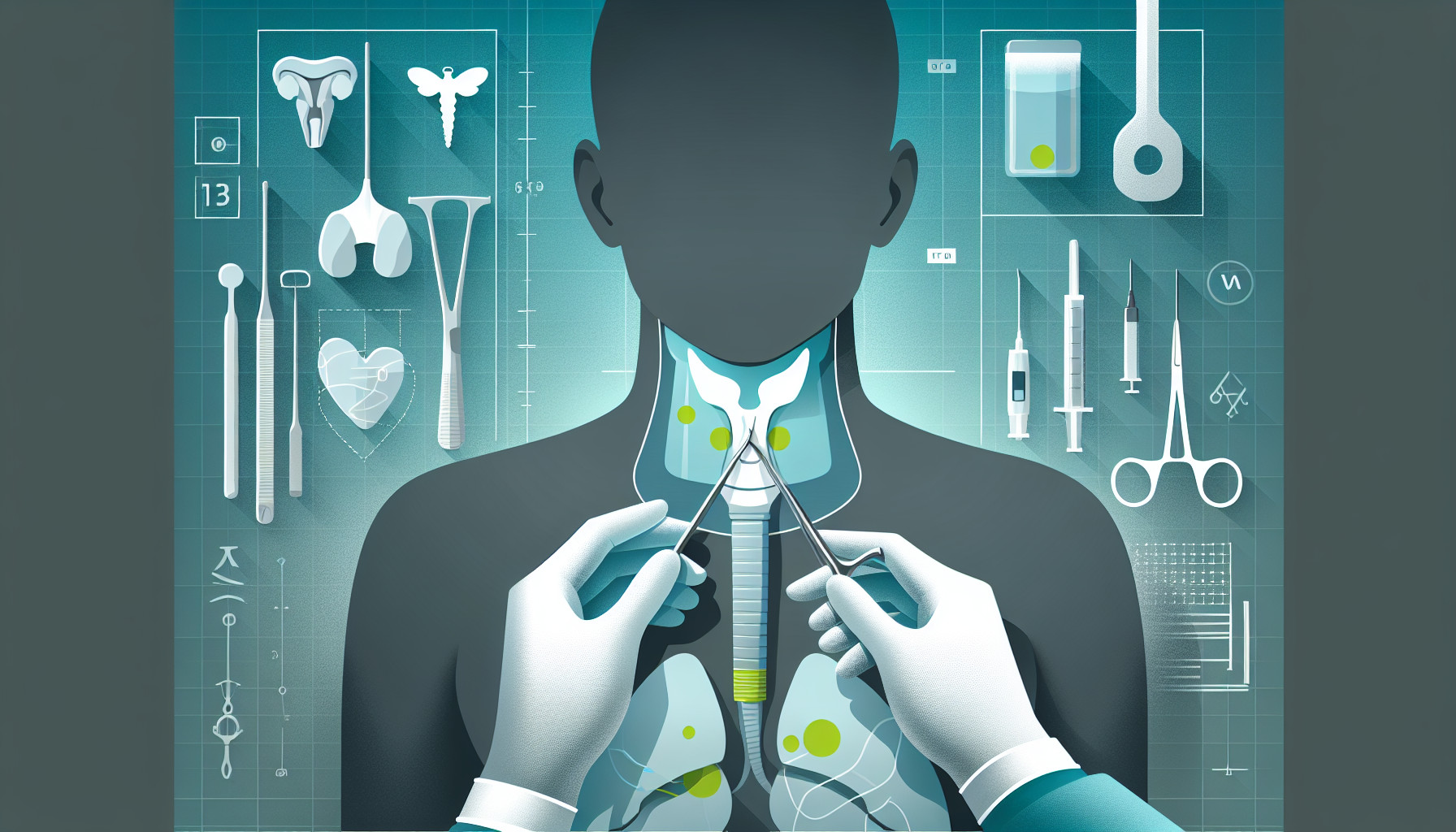Our Summary
This paper discusses a case study of a 49-year-old woman who experienced a delayed rupture of her trachea (the tube that connects the throat to the lungs) a week after undergoing a specific type of thyroid surgery, known as Transoral Endoscopic Thyroidectomy Vestibular Approach (TOETVA).
The authors also review 13 other cases of endoscopic thyroidectomy, eight of which were TOETVA, where similar injuries occurred. These injuries happened due to various reasons such as accidental cutting, puncture by surgical needle, dilation, trocar placement, and thermal injury from the energy device used during the procedure.
The paper concludes that tracheal injuries, following TOETVA, are not reported as often as they should be, and they can happen due to various reasons. Among these, thermal injuries from the energy device used in the surgery are more likely to cause a delayed rupture. The authors suggest careful and precise dissection and standardized use of energy devices to prevent such complications.
FAQs
- What is the transoral endoscopic thyroidectomy vestibular approach (TOETVA)?
- What are some of the complications associated with TOETVA?
- What factors can induce tracheal injury following TOETVA?
Doctor’s Tip
Helpful tip: To reduce the risk of tracheal injury following thyroidectomy, it is important for surgeons to exercise caution during the procedure, including careful blunt dissection and standardized use of energy devices. Patients should also be aware of the potential risks and symptoms of tracheal injury, such as difficulty breathing or swallowing, and seek immediate medical attention if they experience any concerning symptoms after surgery. Regular follow-up appointments with your healthcare provider are recommended to monitor for any potential complications.
Suitable For
Patients who are typically recommended for thyroidectomy include those with thyroid nodules that are suspicious for cancer, thyroid cancer, Graves’ disease, toxic multinodular goiter, and large goiters that cause compressive symptoms. It is important for patients to undergo a thorough evaluation by an endocrinologist and/or surgeon to determine if thyroidectomy is the best treatment option for their specific condition. Additionally, patients who are considering TOETVA should be carefully selected based on factors such as the size and location of the thyroid nodule, the presence of any contraindications to the procedure, and the surgeon’s experience with the technique.
Timeline
Before thyroidectomy:
- Patient undergoes pre-operative evaluation and assessment by a healthcare provider.
- Patient is informed about the procedure, risks, and benefits of thyroidectomy.
- Patient may undergo pre-operative tests such as blood work, imaging studies, and thyroid function tests.
- Patient may be instructed to stop certain medications before surgery.
- Patient is admitted to the hospital on the day of surgery.
After thyroidectomy:
- Patient undergoes the thyroidectomy procedure, which can vary in duration depending on the complexity of the case.
- Patient is monitored closely in the recovery room for any immediate complications.
- Patient is discharged from the hospital after a period of observation, usually within 24-48 hours.
- Patient may experience symptoms such as pain, swelling, and difficulty swallowing in the days following surgery.
- Patient follows up with their healthcare provider for post-operative care and monitoring of thyroid hormone levels.
- Patient may require thyroid hormone replacement therapy if the entire thyroid gland was removed.
- Patient may experience complications such as delayed tracheal rupture, which can occur weeks after surgery and may require further treatment.
What to Ask Your Doctor
- What are the potential risks and complications associated with a thyroidectomy, specifically the transoral endoscopic thyroidectomy vestibular approach (TOETVA)?
- How common is tracheal injury or rupture following a thyroidectomy, and what factors may increase the risk of this complication?
- How will the surgeon ensure that proper precautions are taken during the procedure to avoid tracheal injury?
- What symptoms should I watch for postoperatively that may indicate a tracheal injury or rupture?
- What is the recommended follow-up plan after a thyroidectomy to monitor for any potential complications, including tracheal injury?
- Are there any specific precautions or restrictions I should follow after the surgery to reduce the risk of tracheal injury or other complications?
- How will tracheal injury be diagnosed and treated if it were to occur after the surgery?
- Are there any alternative surgical approaches or techniques that could potentially lower the risk of tracheal injury during a thyroidectomy?
- What is the surgeon’s experience and success rate with performing thyroidectomies, particularly with regard to avoiding complications like tracheal injury?
- Are there any specific steps that can be taken during the recovery period to promote healing and reduce the risk of complications like tracheal injury?
Reference
Authors: Weng YJ, Hu BL, Jiang J, Min L, Ai Q, Chen DB, Chen WC, Huang ZH. Journal: Head Neck. 2022 Nov;44(11):E38-E44. doi: 10.1002/hed.27180. Epub 2022 Sep 7. PMID: 36069506
